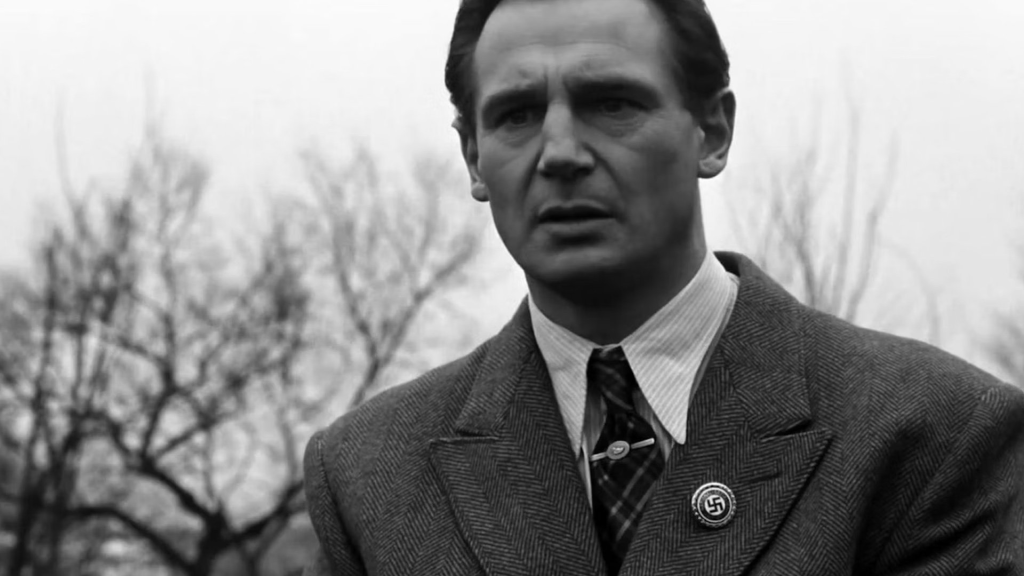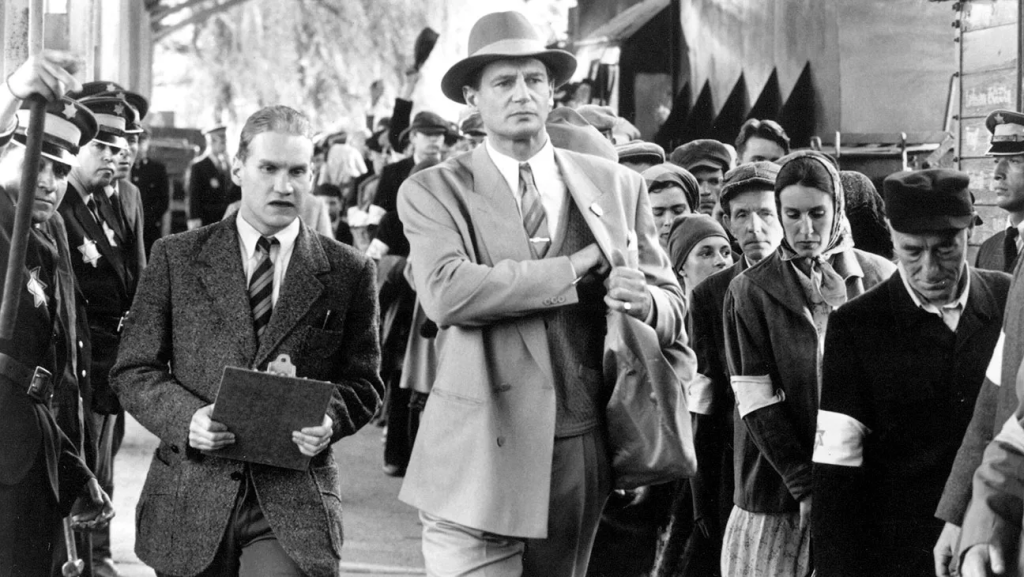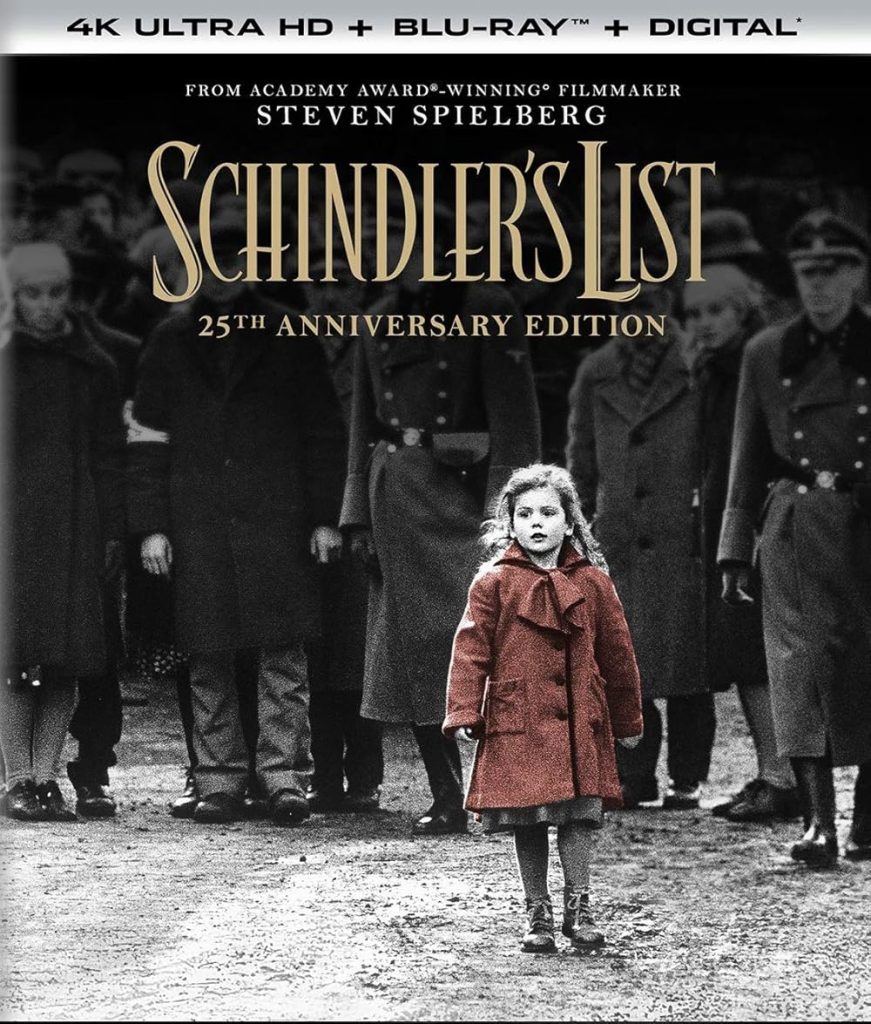Schindler’s List (2025) is the digitally remastered re-release of Steven Spielberg’s 1993 masterpiece. The film tells the true story of Oskar Schindler, a German industrialist and Nazi Party member who saved over 1,100 Jews during the Holocaust by employing them in his factories. Set in German-occupied Poland during World War II, the movie follows Schindler’s moral transformation as he witnesses the horrors of Nazi persecution. With the help of his accountant Itzhak Stern, Schindler uses his wealth and influence to protect his Jewish workers from deportation to concentration camps. The film explores themes of humanity, moral courage, and the devastating impact of systemic evil.

2. Notable Elements
- Performances:
Liam Neeson delivers a career-defining performance as Oskar Schindler, capturing his complex journey from opportunistic businessman to selfless savior. Ben Kingsley shines as Stern, embodying quiet resilience and intelligence, while Ralph Fiennes gives a chilling portrayal of Amon Goeth, a sadistic Nazi officer whose cruelty serves as a stark contrast to Schindler’s growing compassion. - Cinematography and Direction:
Spielberg’s use of black-and-white cinematography by Janusz Kamiński heightens the film’s emotional intensity and historical authenticity. The iconic scene featuring the girl in the red coat—a rare splash of color—symbolizes innocence amidst unimaginable horror. Spielberg’s restrained yet powerful direction ensures that every frame resonates with meaning. - Score by John Williams:
Williams’ hauntingly beautiful score, featuring violin solos by Itzhak Perlman, underscores the film’s emotional depth and adds a layer of poignancy to its most harrowing moments.

3. Themes and Messages
- Moral Courage:
The film emphasizes that one individual can make a difference in the face of overwhelming evil. Schindler’s transformation illustrates how moral courage can triumph over apathy and greed. - Humanity Amidst Horror:
Despite its depiction of unimaginable suffering, the film also highlights acts of kindness and solidarity among its characters, offering a glimmer of hope. - The Cost of Denial:
By showing how disbelief and denial contributed to the vulnerability of Jewish victims, the narrative underscores the importance of recognizing and confronting systemic oppression.

4. Personal Impressions
Schindler’s List (2025) remains one of cinema’s most profound explorations of humanity’s capacity for both cruelty and compassion. Spielberg’s meticulous direction ensures that every moment resonates with emotional depth and historical significance. The remastered visuals in 4K Dolby Cinema enhance its impact, making it an even more immersive experience for modern audiences. While its graphic depictions may be difficult to watch, these elements are integral to its authenticity and power.

5. Audience Recommendations
This film is essential viewing for anyone interested in historical dramas or stories about moral courage. Its unflinching portrayal of the Holocaust makes it a powerful educational tool for younger audiences seeking to understand this dark chapter in history. However, due to its intense subject matter, it may not be suitable for all viewers.
6. Conclusions and Ratings
Schindler’s List (2025) is a timeless masterpiece that continues to inspire reflection on humanity’s darkest moments and brightest acts of bravery. Its performances, direction, and themes make it an enduring work of art that remains as relevant today as it was upon its original release. I would rate it 5 out of 5 stars.
7. Trailer on YouTube
Watch the official trailer for the remastered version here:
Images:
- The Girl in Red Coat Scene: A still showcasing Spielberg’s iconic use of color in an otherwise black-and-white film.
- Liam Neeson as Oskar Schindler: A photo capturing Neeson’s emotional portrayal during a pivotal moment in the factory.
- Ralph Fiennes as Amon Goeth: An image highlighting Fiennes’ chilling performance as one of cinema’s most terrifying villains.
